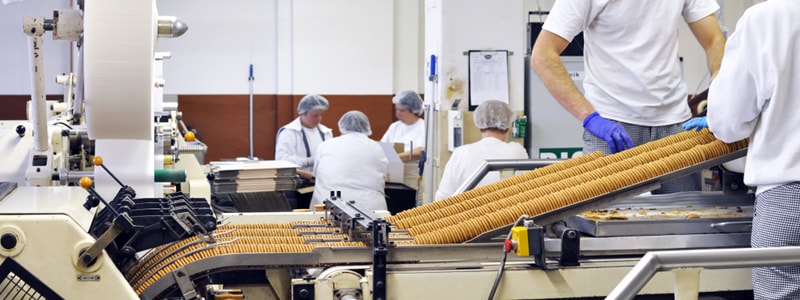9 Questions Food and Drink Manufacturers Must Ask About ERP
The Food and Beverage industry is one of the few industries which require an on-the-clock ERP support and management. This is due to the fact that the industry deals with perishable items which are consumed by human beings. And that’s why it becomes essential for this industry to have modern ERP systems that will decrease the heavy work load that would otherwise be expected from the IT staff.
While choosing for the ERP, the manufacturers need to look for certain important factors such as visibility, control over cost, quality management and precise traceability. Every manufacturer need to ask the below nine questions about their ERP.
1. How does the proposed solution support your business?
While evaluating the ERP, check with the vendor if the ground staff such as floor workers can attend the system demonstrations or reference visits. If the system is not user-friendly it completely affects the ROI resulting in inaccurate data.
2. Can a non-programmer develop a new business process in the system?
This particular point is extremely beneficial from additional cost and time-saving perspective. Consultants and programmers charge hundreds of dollars on an hourly basis to program or integrate systems which were originally not built for food and beverage manufacturers. These systems are not very easy to use and cannot be used by just any average user. However, the modern cloud-based systems are much more flexible and any advanced user should be able to create new screens or reports without the need to write any complex codes.
3. How does the system support the “extended enterprise” from “farm to fork?”
Customers and suppliers need to have direct access to data on all aspects of the manufacturing process. And to fulfill this need an ERP system should be able to provide a collaboration portal that would reveal any transaction to a customer or a supplier. The interface needs to be user-friendly, meaning the user shouldn’t feel the need for extensive training to access this portal.
4. How is the software licensed?
A limited software licensing adds restrictions with regard to traceability as many people use the same license. A flexible unlimited software license model lets a full deployment throughout the enterprise that would include suppliers and customers who may need to relate with the data being tracked. As your business continues to flourish you would need to upgrade your software license.
5. How many different ways can users access the system? Is the user interface consistent throughout the application?
Accessibility of the system from any client application needs to be taken into consideration. For e.g accessibility through mobile devices, Windows, Mac, Linux, etc. For the purpose of integration, each software package needs to be tested. These various platforms can be standardized on a web-based user interface, which is accessible from any web browser on virtually any PC or mobile device.
6. Is it a true, cloud-based solution?
Food and Beverage manufacturers are on a lookout for a cloud-based system for the functionality they require for their systems to accommodate their needs. That would mean they wouldn’t have to give a production downtime to add new functionality to employ a new version of the software. A true software as a service (SaaS) solutions makes this deployment easier and affordable cost-wise. SaaS solutions are a priced based subscription that you can budget as an operating expense. (OPEX).
7. How does your system support safety and the Food Safety Modernization Act (FSMA)?
FDA requires a traceability report within two hours of the request. And this kind of readiness is only possible if your transactions are digital. Your ERP system should be designed to collect real-time data and further on this data must be easily available whenever required.
8. Does the system give you complete visibility into the costs and profitability of your business?
Every company undergoes compliance checks and audits at all levels. And the success of these checks heavily relies on readily available data. The manufacturing solutions should be well equipped to provide complete, detailed documentation of every process and activity that could be referenced in the compliance documentation. Because of the data is captured in an accurate and timely manner it further helps with the decision making the process.
9. Are inventory records directly tied to physical reality?
You need to have a system in place that is able to trace inventory at every point of its cycle with add-on features added to the database. We have already highlighted the traceability factor earlier. Traceability needs to be automated and streamlined. In case of recall of any product, it becomes important to trace the genealogy of the products and if this data is in the system, the recall becomes much easier.
